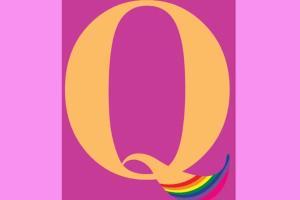What better time to do that than June, which is internationally recognised as Pride Month. While the rest of the world gets cracking with colourful marches full of gaiety, mid-day gives you a handy guide to everything that is gay-okay

Graphic/Ravi Jadhav
If the confusion around Beed constable Lalit Salve's gender identity was any indication, India still has a long way to go when it comes to understanding the rainbow of distinctions in the LGBTQ+ spectrum. But we can always educate ourselves to be better allies to the community. What better time to do that than June, which is internationally recognised as Pride Month. While the rest of the world gets cracking with colourful marches full of gaiety, mid-day gives you a handy guide to everything that is gay-okay.
ADVERTISEMENT
How is the spectrum divided?
Love me gender: Gender is a psychological identity and, more importantly, a social construct. While one may biologically be male, they might identify as a woman and vice versa. People who don't see themselves within the gender binary, identify as genderqueer. While discussing gender identity, it is important to know what cisgender and transgender mean. A cisgender person identifies with the gender they were biologically born into, while for a transgender person, their gender identity is dissociative from their biological identity. It is also imperative to remember that while communicating with a trans person, one must use gender pronouns (he, she, they) chosen by them.
Spill the sexuali-tea: Sexuality is, as the term denotes, a sexual identity, which is based on physical attraction. Heterosexuality (aka being 'straight') is when you're attracted to the opposite sex, while homosexuality is liking someone of the same sex. Bisexuality means being attracted to people from both genders. Pansexuality is liking someone regardless of their gender or sexual identity. Distinct from all of the above terms is asexuality, which is the lack of sexual attraction towards anyone.
Know the letters better
L: Lesbians – Homosexual women
G: Gay – Homosexual men
B: Bisexual – Men and women who like men and women
T: Transgender – Men and women who associate with a gender identity that's different from their biological identity
Q: Queer – A 'sexual orientation or gender identity not corresponding to heterosexual norms'
Questioning: When someone is in the process of discovering their sexuality
Intersex: A general term used for a variety of conditions in which a person is born with a reproductive or sexual anatomy that doesn't seem to fit the typical definitions of female or male, according to the Intersex Society of North America
Asexual: An asexual is someone who does not experience sexual attraction, according to the Asexual Visibility and Education Network. This is not to be confused with celibacy, which is a choice to abstain from sex.
Ally: The Human Rights Campaign says, “An “ally” is a term used to describe someone who is supportive of LGBT people. It encompasses non-LGBT allies as well as those within the LGBT community who support each other.”
The right kind of allied support
American NGO GLAAD lists these tips to be a better ally to the LGBTQ+ community
- Be a listener.
- Be open-minded.
- Be willing to talk.
- Be inclusive and invite LGBT friends to hang out with your friends and family.
- Don't assume that all your friends and co-workers are straight. Someone close to you could be looking for support in their coming-out process. Not making assumptions will give them the space they need.
- Anti-LGBT comments and jokes are harmful. Let your friends, family and co-workers know that you find them offensive.
- Confront your own prejudices and bias, even if it is uncomfortable to do so.
- Defend your LGBT friends against discrimination.
- Believe that all people, regardless of gender identity and sexual orientation, should be treated with dignity and respect.
Catch up on all the latest Crime, National, International and Hatke news here. Also download the new mid-day Android and iOS apps to get latest updates
 Subscribe today by clicking the link and stay updated with the latest news!" Click here!
Subscribe today by clicking the link and stay updated with the latest news!" Click here!







